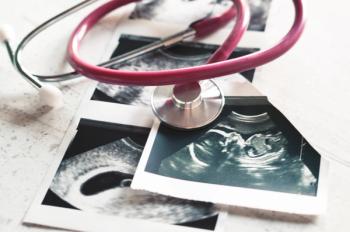
Pregnant Women on Antiepileptics May Be Put at Ease by These Findings
Epilepsy medications can cause folate deficiency-related birth defects but what about other birth defects?
Daniel Holland, PharmD, is a graduate and medical writer from the University of Connecticut School of Pharmacy. Connect with him on LinkedIn or at daniel.holland222@gmail.com.
Antiepileptic use during pregnancy has increased in the past few years, spurred on by newer antiepileptic medication options, both in the United States and abroad. Antiepileptic medications’ teratogenic effects exceed the long-confirmed deformities related to folate deficiency such as spina bifida and cleft palate or lip.
The American Academy of Neurology has associated valproate with decreased intelligence in a dose-responsive fashion. Also, valproate-exposed children perform worse on motor and language skill tests as well.1 (Learn nore about valproate exposure during pregnancy by watching below).
A 2013 Danish study linked antiepileptic exposure to 390% and 200% increased risk of autism and autism spectrum disorder development.2 Possible confounders include that mothers with epilepsy may be more likely to have a child with autism independent of treatment and seek a formal diagnosis of autism. Yet these uncontrolled variables do not account for valproate’s particularly strong association with autism and autism spectrum disorders.
Research has tied phenobarbital and topiramate to cognitive effects as well. Phenobarbital exposure may cause a half of a standard deviation-sized intelligence quotient deficit. However phenytoin, carbamazepine, lamotrigine, and levetiracetam have no effect or have a positive association with intelligence.1
The evidence regarding newer antiepileptic medications’ human teratogenic potential is developing within post-marketing analyses because intentional exposure is unethical. For example, the LMNG-UKEPR (published in 2014, 15 years after first FDA approval) found levetiracetam-exposed children had similar language comprehension and expression as unexposed children and better results than valproate-exposed children.1
A British Medical Journal Open study published in its January 2017 issue shows children with prenatal antiepileptic exposure had slightly increased physician contact frequency during childhood than an unexposed matched cohort.3
The researchers examined the Danish National Patient Register for clinical data on all singleton births from 1997 to 2013 of mothers prescribed antiepileptic medications (963,010). The study criteria excluded the records of children from multiple pregnancies (eg, twins), unlinked to a mother, or missing gestational age. This study used physician contact frequency as a surrogate outcome for overall health status because the less striking consequences of antiepileptic exposure are difficult to capture effectively.
The study authors controlled for maternal socioeconomic and health confounders but could not control for lifestyle risk factors (eg, smoking, alcohol consumption, and poor diet). Antiepileptic-exposed children were more likely to be male and born prematurely than the unexposed population. Antiepileptic-using mothers were more often living alone, less educated, low income, or diagnosed with substance use disorder, depression or a severe psychiatric disorder. These factors could have driven the slight increase in physician contact.
The study found antiepileptic-exposed children had contact with their general practitioners 3% more often. Increased phone calls drove the contact trend. The authors found no comparative trends in performed services and could not identify reasons for contact in the patient database.
The most commonly prescribed antiepileptic medications were lamotrigine (44%), valproate (14%), carbamazepine (12%), oxcarbazepine (11%), clonazepam (10%), and levetiracetam (4%). A previous study found pregnant Danish women are highly compliant to their antiepileptic medications therefore the authors assumed universal compliance in their analysis.
Children exposed to valproate or oxcarbazepine had the most physician contact (8% increased risk). Physician contact frequency among children exposed to lamotrigine (the most common antiepileptic in Denmark) was unaffected upon controlling for known confounders. Interestingly, the raw data showed lamotrigine-exposed infants had 27% more physician contacts. The authors found a dose response relationship in valproate and levetiracetam-exposed children. However, levetiracetam failed to reach statistical significance at any dose.
Children born to mothers without epilepsy were the most affected. Maternal mental illness (eg, bipolar disorder treated with antiepileptic mood stabilizers) may have been a confounding variable. This contradicts the assertion that seizure-induced hypoxia causes some of the birth defects and poor outcomes associated with antiepileptic exposure.
Past research has associated antiepileptic exposure to low Apgar scores. Children with low Apgar scores are at increased risk for neurologic disability, epilepsy development, and cancer.
The slight increase in physician contact among children with prenatal antiepileptic exposure seems clinically insignificant overall but certain subpopulations (eg, low Apgar scores, valproate or oxcarbazepine exposure) are disproportionately affected. The precise impacts of antiepileptic medications are unclear but this result, despite confounding variables favors the assertion that many, if not most, children are unaffected by prenatal exposure. This finding should be reassuring to antiepileptic-using women who are pregnant or plan to become pregnant working in concert with their antiepileptic prescriber and gynecologist.
Works Cited
- Inoyama K, Meador KJ. Cognitive outcomes of prenatal antiepileptic drug exposure. Epilepsy Res. 2015; (8)114: 89—97. doi:10.1016/j.eplepsyres.2015.04.016.
- Christensen J, Grønborg TK, Sørensen MJ, et al. Prenatal valproate exposure and risk of autism spectrum disorders and childhood autism. JAMA. 2013; 309(16):1696-1703.
- Würtz AM, Rytter D, Vestergaard CH, et al. Prenatal exposure to antiepileptic drugs and use of primary healthcare during childhood: a population based cohort study in Denmark. BMJ Open. 2017; 6: e012836. doi:10.1136/bmjopen-2016-012836.
Newsletter
Stay informed on drug updates, treatment guidelines, and pharmacy practice trends—subscribe to Pharmacy Times for weekly clinical insights.











































































































































































































